Having cantered to a 27th La Liga title last season, Barcelona not only did so at the expense of Real Madrid‘s short period of dominance but also broke records in the process. Their defensive solidity was ever-present last season, as they managed a club-best 20 league goals conceded – beating the figures recorded by historic Barcelona sides under the likes of Luis Enrique and Pep Guardiola. With their first league title since the loss of Lionel Messi, Xavi may have imagined he had potentially found a possible blueprint for the Catalan giants to continue their superiority for years to come.
In contrast, the start to this 23/24 season has been one of mixed emotions and new challenges his side has had to face. The loss of key personnel, both in the summer window and through long-term injury, has significantly hurt their ability to remain as compact and resilient in front of goal. Despite only losing two games so far this campaign, those losses, crucially coming against title contenders in fierce rivals Real Madrid and Girona, mean Barcelona currently sit seven points adrift in fourth place.
This tactical analysis and scout report will provide an analysis of the frailties that have arisen within the Barcelona defensive structure and how Xavi’s side must overcome this tricky period to re-establish their defensive tactics and solidity, which propelled them to becoming one of the most formidable defensive units in Europe last year.
Was last season an anomaly?
An important aspect to address would be the fact that Barcelona’s achievements last year, whilst remarkable and dominant, would be increasingly difficult to replicate. While removing the occurrence of their own goals conceded by Barcelona, their 22/23 campaign saw them concede a total of 17 goals from an astounding figure of 33.6 xG from their opposition. This stark number clearly represents a significant overperformance on Barca’s end, suggesting that whilst their defence was exceptional last year, an element of luck was also present in keeping the ball out of the net.
Taking this into account, when looking at the expected data thus far in La Liga, we can observe a contrasting notion about the strength of their defensive unit. While unfortunate circumstances have occurred, such as first-choice keeper Marc-Andre ter Stegen being sidelined for a prolonged period, Barcelona has conceded 18 league goals from an xG total of 17.43. Although this figure is much more representative compared to the outlier we observed last season, it can also help paint the picture of Barcelona’s defensive regression and support some of their problems we will address later.
How they have set up in possession
When addressing the natural occurrence of players coming and going within the summer transfer window, Xavi has tinkered with his side’s setup due to the various roles and personnel he has introduced. Despite his experimentation with several different formations, including the 4-2-3-1 and even the 3-4-1-2 against Real Madrid, Barcelona have most often used their classic 4-3-3, which was observed in their recent defeat to Girona.
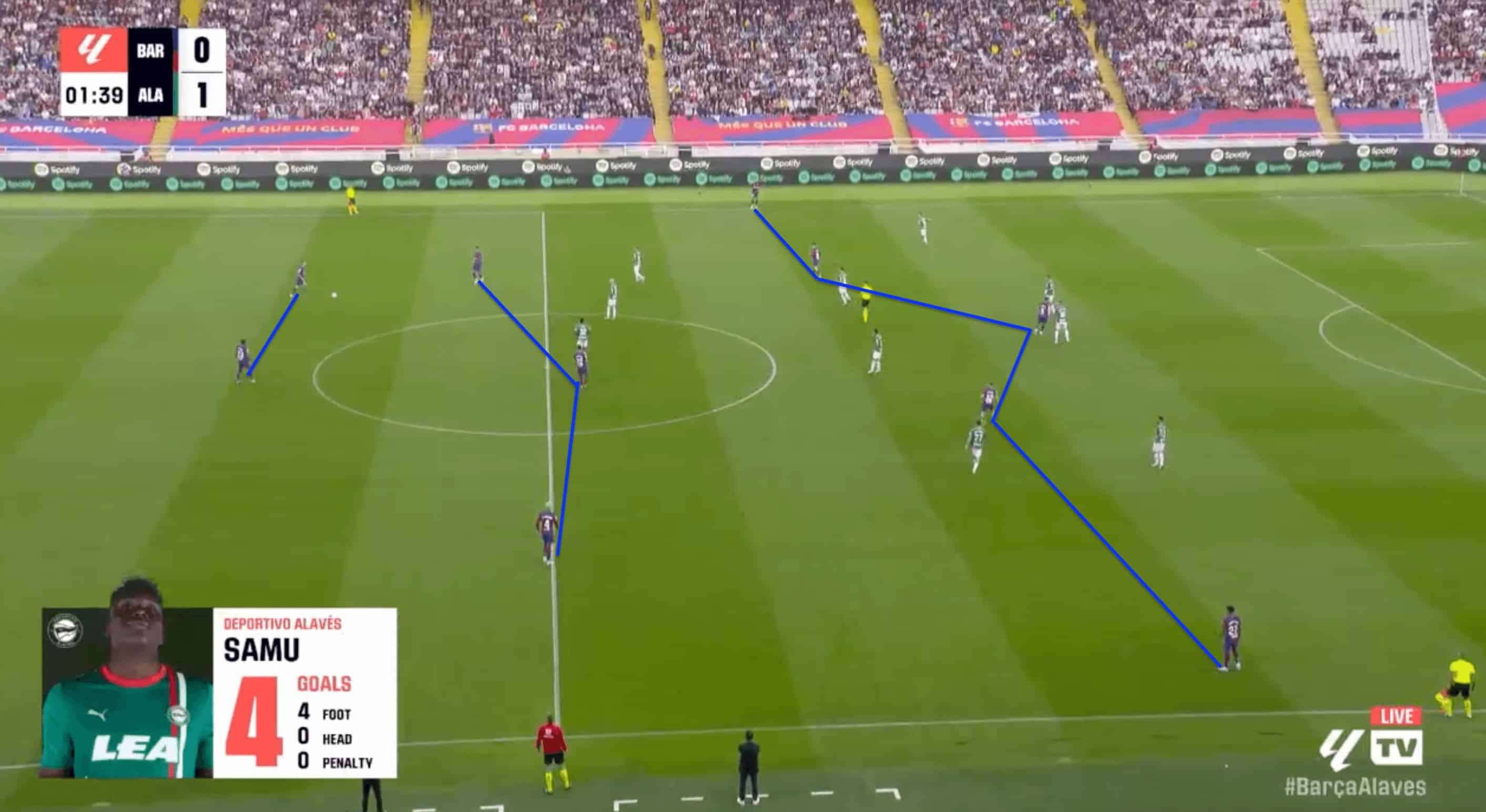
2-3-5.
This starts with the two central defenders. Usually, Jules Kounde/ Ronald Araujo and Andreas Christensen interact with their lone single pivot, dropping deeper to receive the ball and find passing outlets. New addition Joao Cancelo can be found alternating between a true full-back position and an inverted central role in order to allow for variety in their play. On the other hand, left-back Alejandro Balde is given much more freedom as a result of Cancelo’s movement on the flank, allowing for him to be the aggressive wingback holding width on the left, which in turn allows wide forwards like Joao Felix the opportunity to cause havoc in the half spaces and make movements into the penalty area.Despite their overload in midfield, the progressive carrying abilities and propensity to bypass the opponent press cause Barcelona’s central defenders to ignore their passing outlets in the middle third. Their athletic ability and comfortability in possession of the ball allow them to perform driving runs to facilitate Xavi’s quicker and more direct style.
Defensive shape
In contrast, when defending, Barcelona look to win the ball back as quickly as possible with an aggressive pressing style. They look to commit multiple players high up the pitch in order to stifle the opponent’s counterattacking opportunities. This has shown to be an incredibly successful tactic, with Barcelona currently allowing only 9.5 PPDA (passes per defensive action), the second-greatest total in La Liga this season. This, coupled with their 29 high turnovers resulting in goal-scoring opportunities, indicates the effectiveness of their pressing unit.
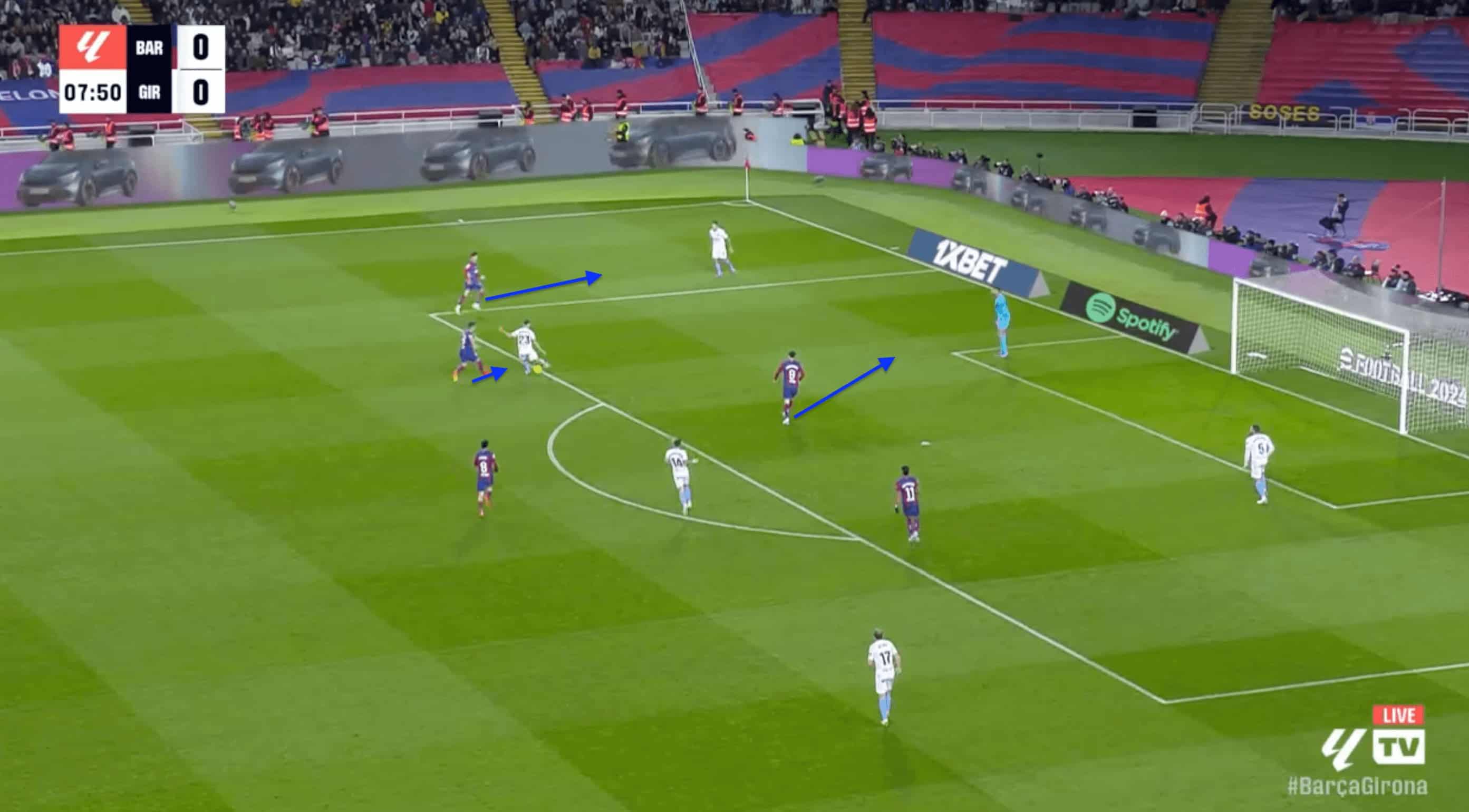
With this in mind, Barcelona don’t have as much of an opportunity to shape up in their true defensive structure due to their ability to protect their final third. However, when required, Xavi aims to have his side create a compact 4-1-4-1, forcing his attack-minded full-backs to drop deeper into the defensive line.
Barca’s desire to prevent any progression through the central areas has seen them become vulnerable on the flanks, with the opposition finding larger zones of control and more opportunities to attack 1v1 against isolated defenders, leading to increased possession in these dangerous areas.
Once the ball is played out wide, Barcelona look to slide across and flood the space to stop the opposition from having an easy switch of play- instead forcing them to play the ball backwards or inside, where their midfield presence can be overpowering at times.
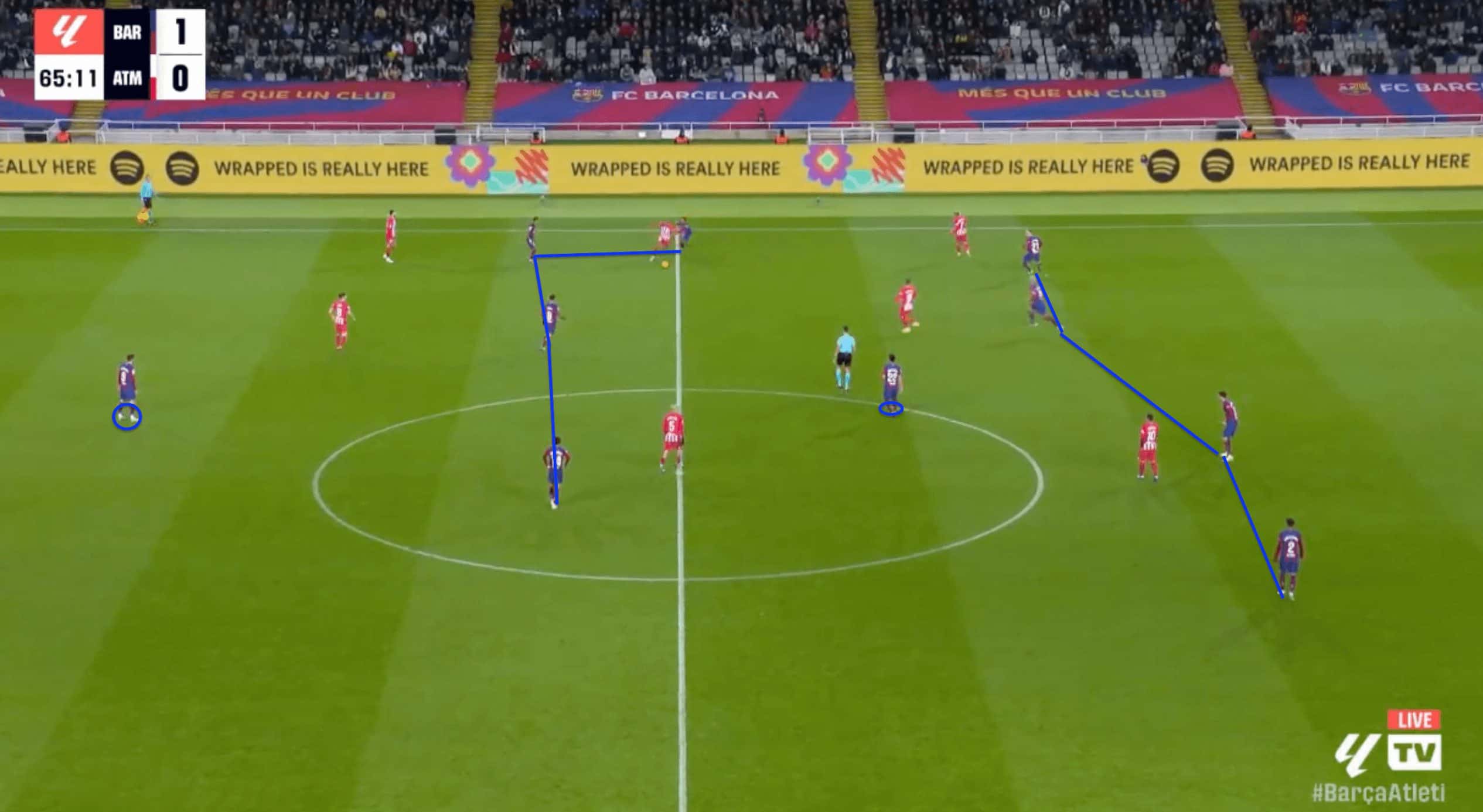
Nightmares in transition
An alarming element of Barcelona’s defensive frailty this season would be their ability to defend against counterattacks, especially when being caught in transition. Despite their technical ability in the middle third, in the event they lose possession in central areas, Barcelona have been seen to struggle due to the physical attributes of their defensive players.
Once their defensive personnel commit themselves higher up the pitch, they have struggled to match the intensity of the opposing side to effectively disrupt the oncoming attacks- looking particularly static and unresponsive, being punished more against the quality attacking sides in La Liga.
They have looked lethargic at times, which was particularly highlighted in their recent 4-2 to league leaders Girona. Barcelona’s midfield and attack were bypassed with a long ball from goalkeeper Paulo Gazzaniga, which Cristhian Stuani could control and distribute with relative ease- subsequently creating Girona’s third goal of the match.
Despite it being late on in the match with obvious fatigue creeping in, it put a huge spotlight on the lack of defensive resistance and effort exhibited by the likes of Kounde and Araujo, ultimately costing the team three points.
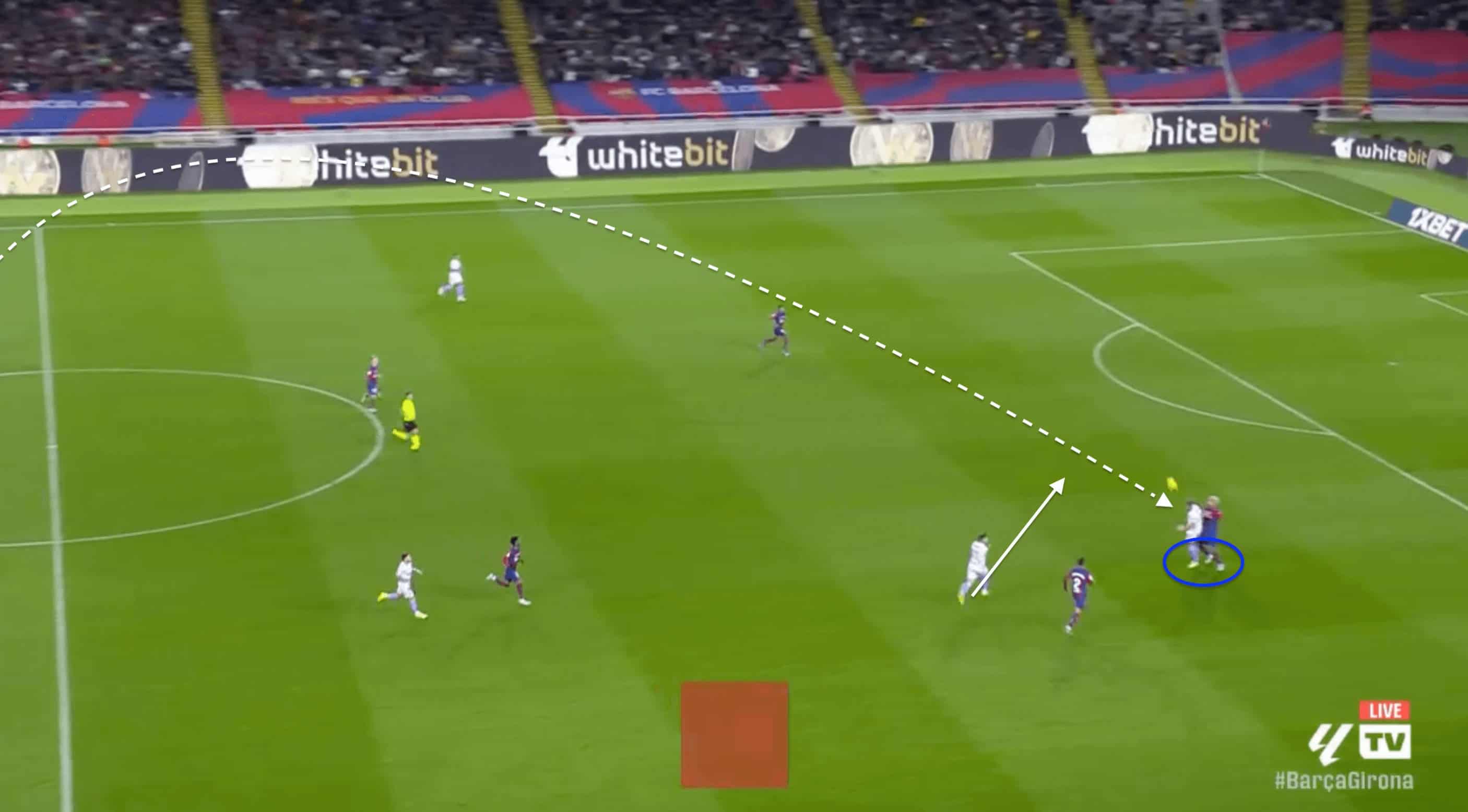
As we have previously mentioned, the addition of Cancelo this summer has been beneficial in possession but may have its drawbacks when it comes to defending. His rotation between central and wider areas punishes his defensive capabilities when caught on the break. This is due to the fact he is found to be committing himself to high up the pitch, leaving areas of vulnerability which his teammates cannot accurately cover.
When Cancelo is playing on the left side of defence in the absence of Balde, Barcelona only find themselves with additional issues to address. The lack of an elite recognised right-back is detrimental to their solidity, with natural central defenders Kounde and Araujo having to fill in.
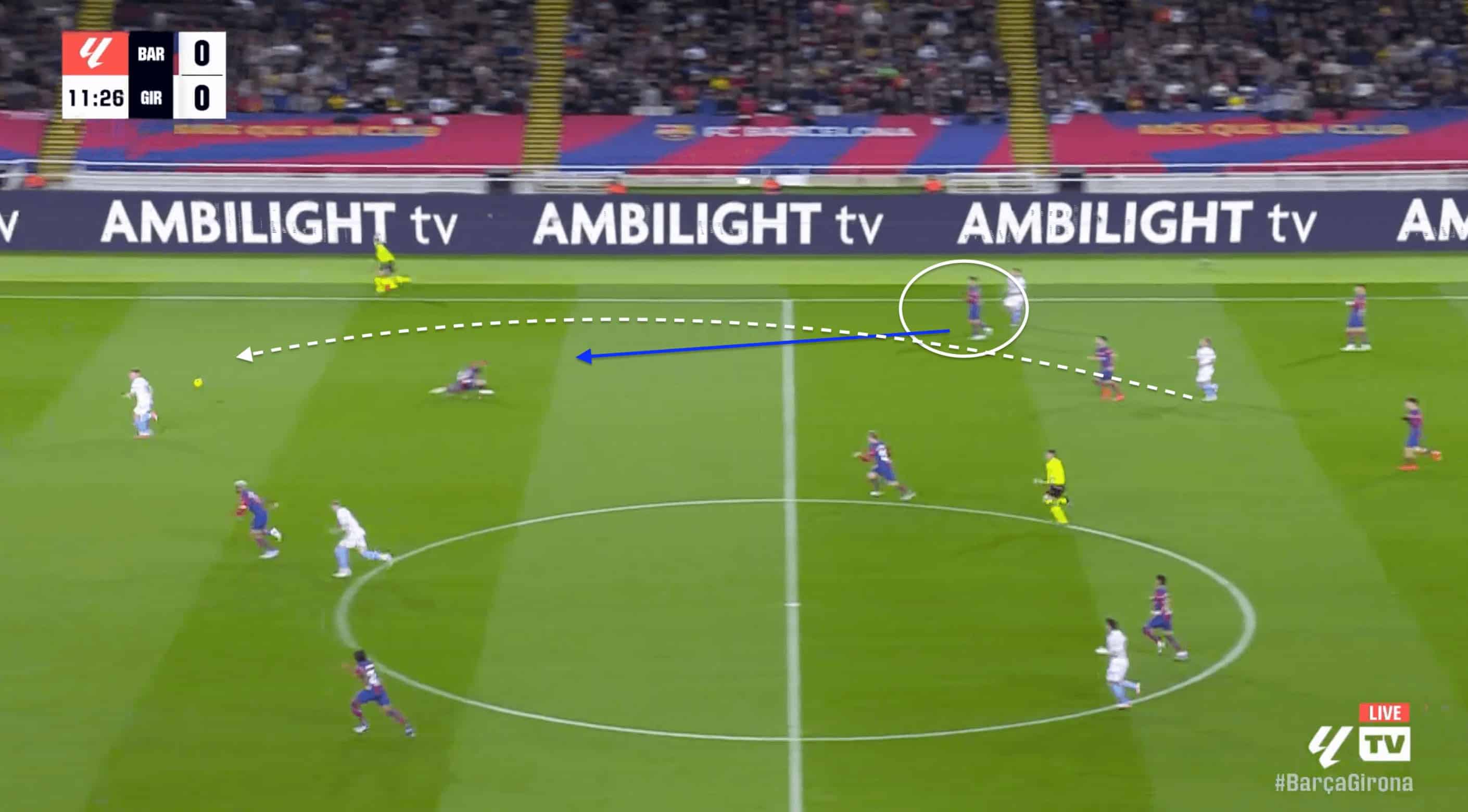
As they are not totally comfortable in this role and their natural tendencies to stay central come into play, they begin to lack width and contribute to Barcelona’s weakness out wide.
Midfield passivity & key injuries
With the departure of Barcelona legend Sergio Busquets in the summer, Xavi has encountered another headache when looking to solidify his midfield. Without the presence of an out-and-out starting number 6, his team have had to encounter a period of tactical adaptation and experiment with different players occupying that role. Throughout the start of this season, Gavi has shone and represented this figure in the Barcelona midfield, which makes everything tick. His elite ball-winning abilities and defensive prowess have covered over a lot of these cracks and provided a reliable press-instigating role model in this period of uncertainty.
However, with Gavi having suffered a season-ending knee injury on Spanish national duty, Xavi is now left scratching his head, and a lot of these midfield deficiencies are coming to the forefront. The likes of Ilkay Gundogan and Frenkie de Jong are both world-class midfielders- but lack the defensive expertise to create enough balance and protect their side against dangerous attacking threats.

Summer acquisition Oriol Romeu has been probably the most defensive-minded replacement in the single pivot, but he fails to maintain the athletic ability and intense movement required to stop Barcelona from being vulnerable to runs from deep into the box. The progressive nature of Barcelona’s midfield three has meant they can be slow to return to their defensive formation, thus creating zones of weakness and gaps for the opposition to exploit. This is especially critical when executing the high line that Xavi has instilled in his team, leading to their ultimate downfall when trying to defend against balls over the top and behind.
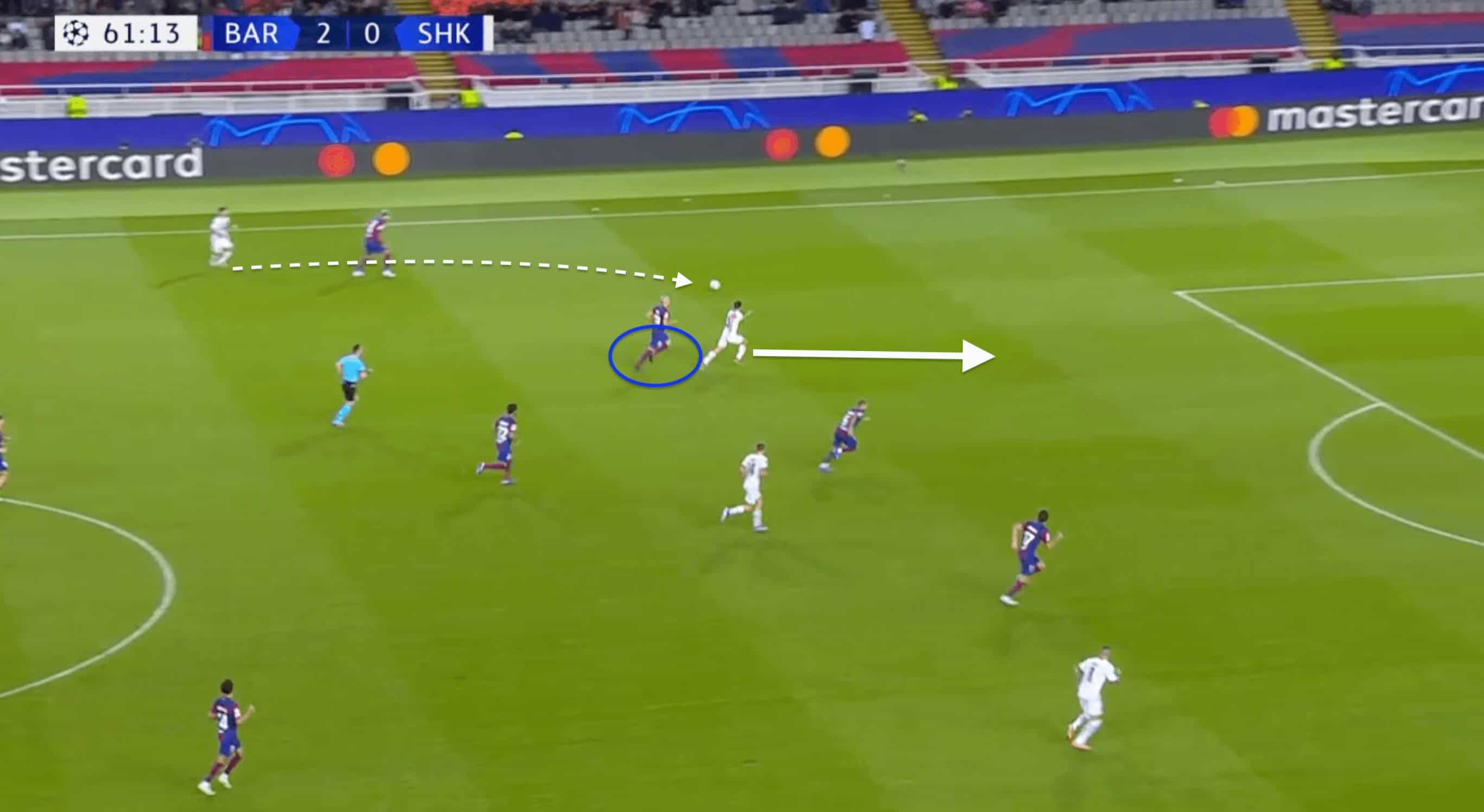
Early troubles
A telling stat indicative of their troubles this season would be their concession of early goals and how this alters their mentality and ability to execute their desired game plan. Barcelona have conceded at least two first-half goals in four of their games in La Liga this season- their third-highest total since the turn of the century. Not only is this stat alone damning, but additionally, they have conceded in the opening minute against both Granada and Alaves. This would imply that they are significantly lacking focus early in the game and allows people to begin questioning their attitudes and desires. However, what may be most damaging would be the increased pressure derived from essentially starting the game on the back foot, causing discomfort and testing the mental toughness of these Barcelona players.
Conclusion
When looking at the bigger picture of this season, Barcelona remain in a position to push on and retain their status as Spanish champions along with a strong European campaign. However, recent defensive frailties have been amplified by the loss of key personnel and an alarming lack of depth. With the winter window on the horizon, Xavi has the opportunity to bolster his squad and fill the key roles that would allow his side to overcome this weak defensive period and regain their positive form.

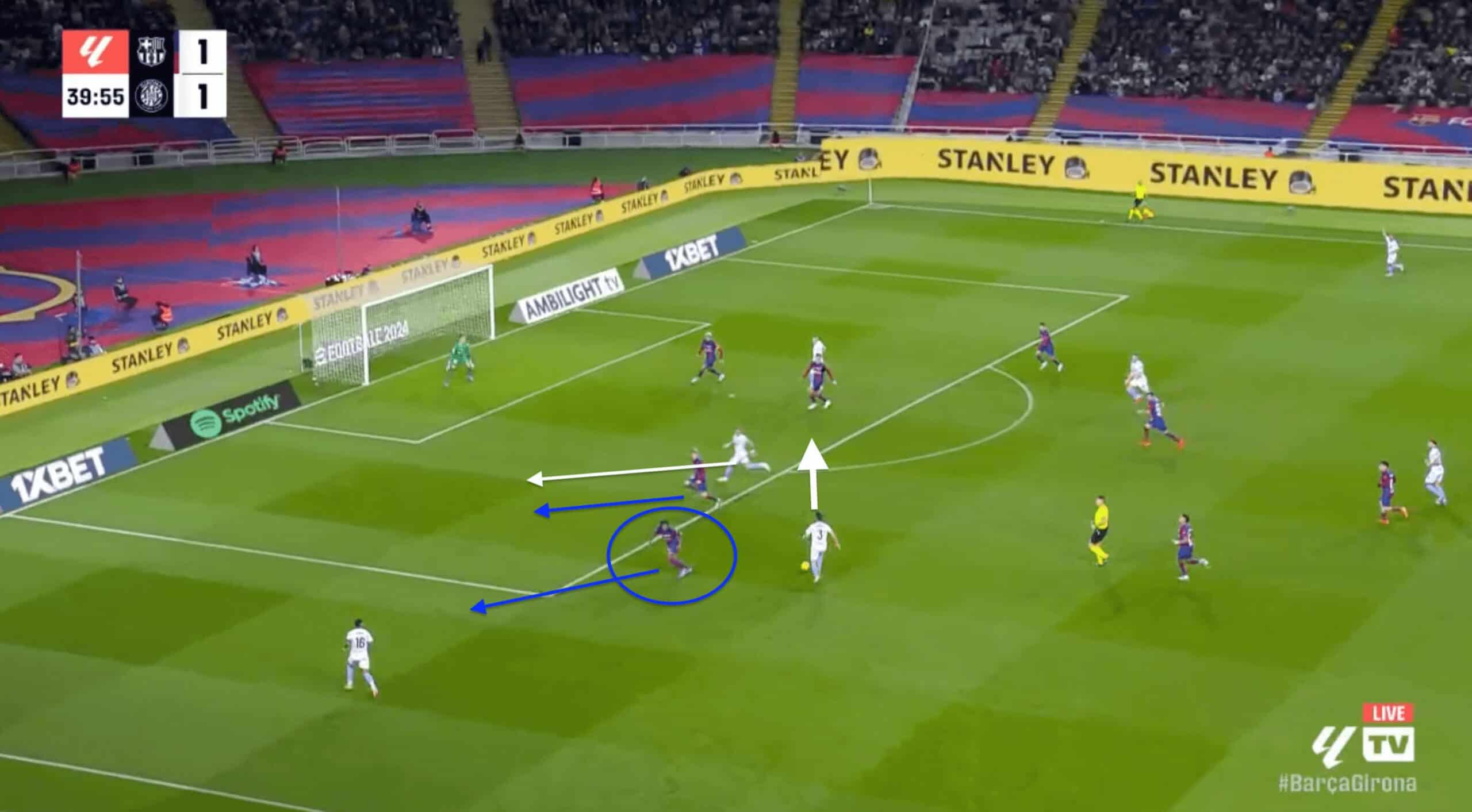



Comments